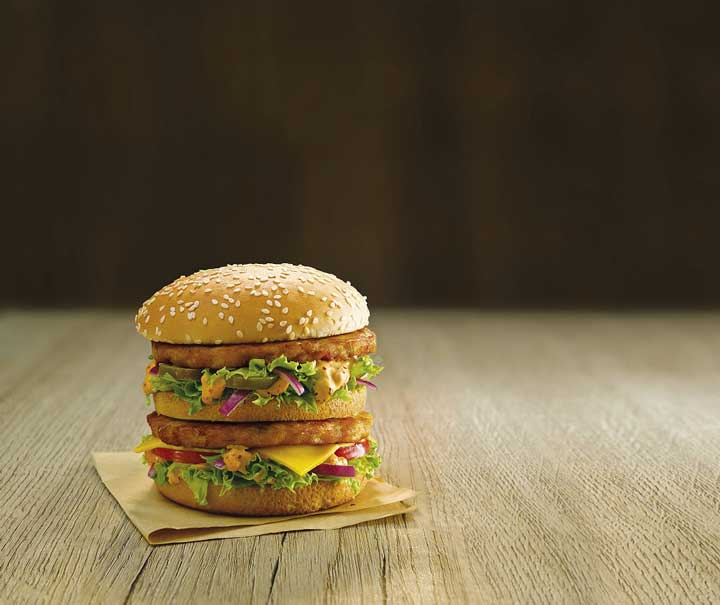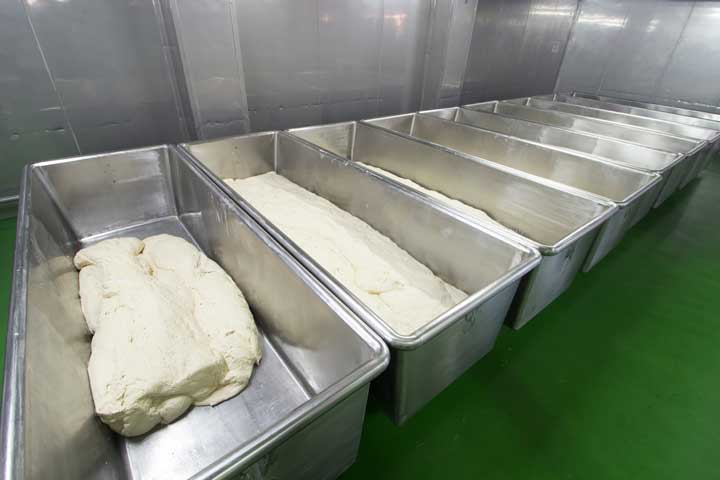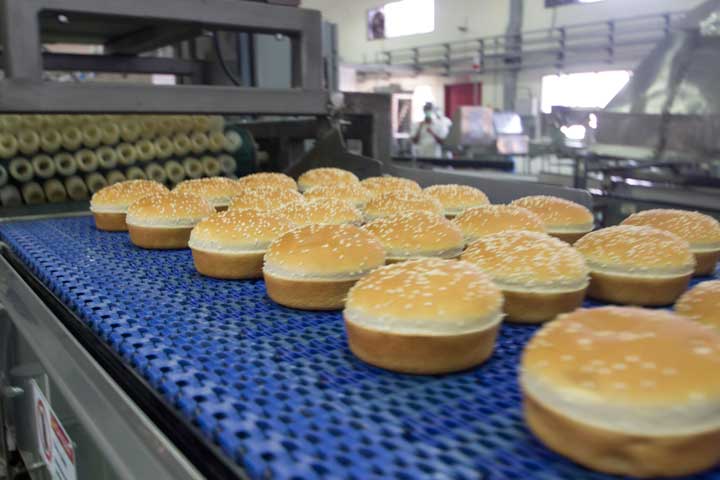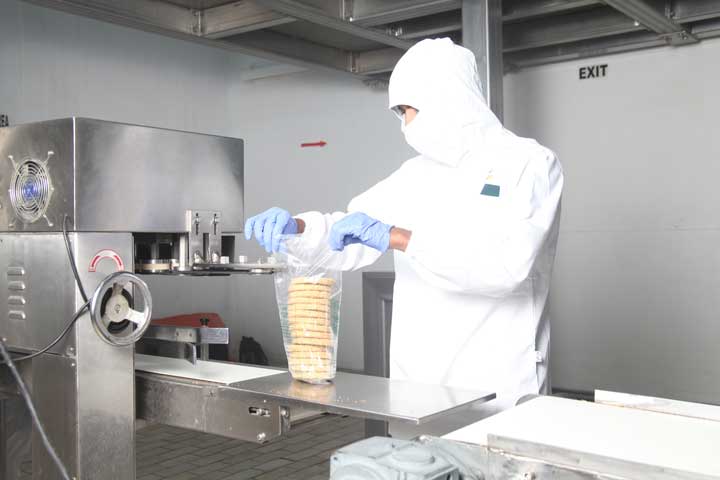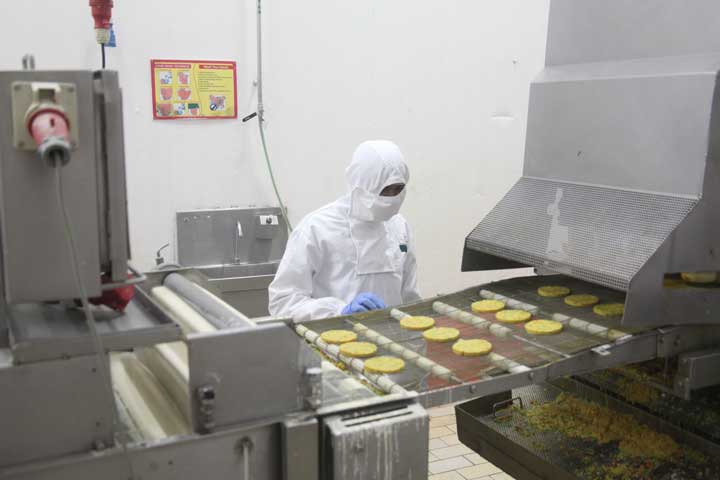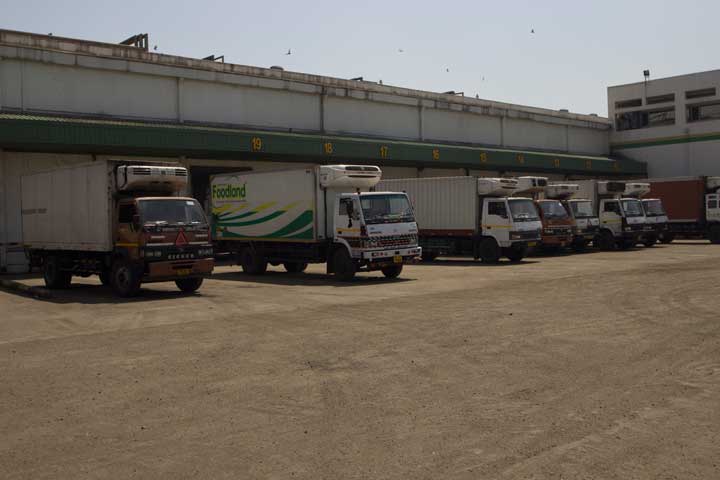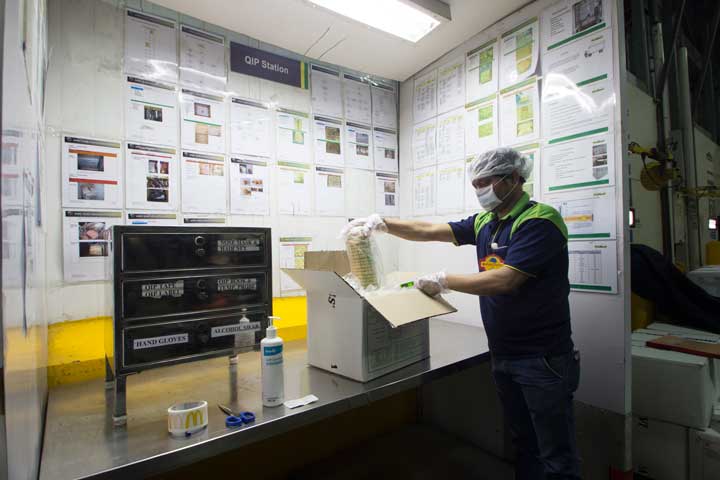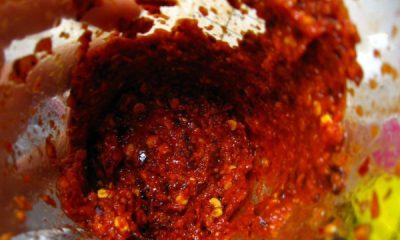Sponsored
The Making of a Legend: The Story behind the McDonald’s Chicken Maharaja Mac
Two patties packed between sesame double decker buns. Oodles of cheese. Iceberg lettuce, onions and a specially made, premium sauce. We’re talking, of course, about the legendary Big Mac – one of McDonald’s signature products and a symbol of ultimate indulgence.
The King among Burgers – The Maharaja Mac
While it retains its basic characteristics, the Big Mac is adapted around the world in line with customer preferences and cultural sensitivity. So, in India the original beef patties that make up the Big Mac have been replaced with fat, succulent vegetarian and chicken patties. In a further tribute to Indian culture, the Big Mac is called the ‘Maharaja Mac’ here, tapping into associations with India’s rich history of royalty as well as establishing the burger as a King amidst its fellow burgers.
If you’re living and breathing in India, we’re sure this isn’t the first you’ve heard of the Maharaja Mac. Over the past few months, it’s been cropping up across social media – it’s been dubbed ‘The Social Burger’ and has been assigned the hashtag – “#ThodaTimeAur’ – which refers to the amount of time it takes to finish the masterpiece, and, subsequently the fact that eating one gives you more time to linger over a meal with friends. A recent video by McDonald’s shows us just how Maharaja Mac can bring you closer to your dining partner. Check it out:
The magnificent burger, therefore, does a lot more than just taste good; it can be the stepping stone you need to learn a little bit more about the person opposite you.
While you are indeed probably aware of the existence of the Maharaja Mac, and may even have dared to try it (if you polished off the full thing, kudos!), we’re delving deeper into the Maharaja Mac in this narrative. We’re taking you behind the scenes to the birth of the McDonald’s sesame crowned bun, the patties that are nestled in it and the produce that surrounds the patties. Excited? So were we, when we took a trip to the production plants on the outskirts of Mumbai.
However, before we get into the nitty gritties, allow us to give you a brief background into the world that is McDonald’s India, if only so that you don’t get confused by names and words that we decide to throw around later. Without further ado –
A Background to McDonald’s India
McDonald’s India launched its first restaurant in October 1996. Over the years a team has been working with farmers, suppliers and manufacturers to develop a fool proof supply chain that ensures McDonald’s outlet should be supplied with the freshest, most high quality ingredients required to assemble their range of products.
In West and South India, McDonald’s is operated by Hardcastle Restaurants Pvt Ltd (HRPL) – a wholly owned subsidiary of Westlife Development Ltd. (WDL), HRPL is a Master franchisee with rights to own and operate McDonald’s restaurants in India’s West and South markets.
WDL through its subsidiary, serves approximately 185 million customers, annually, at its 223 McDonald’s restaurants across 29 cities in the states of Telangana, Gujarat, Karnataka, Maharashtra, Tamil Nadu, Kerala, Chhattisgarh and parts of Madhya Pradesh. (As of December 31, 2015)
While the development of the Maharaja Mac can be said to be a (literally) massive symbol of McDonald’s commitment to maintaining cultural sensitivity in India, there are a variety of other examples. For, instance, did you know that India is the first country in the world where McDonald’s does not serve beef or pork products? Or that the mayonnaise and soft serves are 100% vegetarian – a characteristic that becomes even more impressive when one considers that a mayonnaise recipe traditionally calls for eggs.
Additionally, in the early 90s, while the chain was planning to enter India, it worked tirelessly to ensure that most of its supplies would be locally sourced – providing revenue and employment for a multitude of farmers and suppliers as well as guaranteeing the freshest products for customers.
For instance, in the early 90’s it teamed up with Mrs Bector’s – which was originally a small enterprise that has, over two decades, transitioned into one of India’ leading food suppliers. Thanks to the tie-up, Mrs Bector’s now supplies all baked products to McDonald’s in India.
Here’s where it gets personal. Not that we have a gripe with Mrs Bector’s; quite the contrary; what we mean by personal is that we got the opportunity to step into Bake Best bakery in Khopoli – one of the three bakeries that produces buns for McDonald’s.
The Birth of the McDonald’s Bun:
As soon as we stepped into the bakery, the wonderful smell of baking bread enveloped us – a smell similar to what your grandmother (or grandfather’s) kitchen may smell like if she or he enjoys making homemade bread.
That aroma, however, is where the similarities to your grandparents’ kitchen ends. The bakery operates on a way more massive scale – its spread across 2 acres and produces approximately over 1.6 lakh buns per day. Pause while you work out how many burgers that translates to.
Have you wrapped your head around that? Here are some more figures to process; 75% of the buns produced at Mrs Bector’s are supplied to McDonald’s India; the shelf life of each bun is 5 days and food served in McDonald’s outlets go through more than 2000 safety, quality and inspection checks before arriving at your table.
Indeed, as we traverse through the plant, we see these quality checks manifest themselves in a multitude of ways; each bun is passed through metal detector checks to test for any impurities and is immediately discarded if any are found. Additionally, each bun is inspected according to a variety of parameters – if, for instance, it has cracks it is discarded, as that would cause mayonnaise to leak out of the burgers at the final stage of assembling. A separate room, with limited access in the plant is dedicated purely to quality checks and tests. Furthermore, to ensure hygiene, everyone in the plant (us included) is required to take an air shower, don a sterilised coat, gumboots, a face mask and a hair mask before stepping into the plant.
The process of making the buns, expectedly, takes even more steps than it did to prepare ourselves to enter the plant. To make the bread, a certain type of wheat flour matching the quality standards set by McDonald’s globally through large professional commodity companies is stocked annually. The flour is shaken free into a sifter. It is then processed into dough and fermented for two hours, developed, proofed and then placed into a temperature controlled oven.
After being baked, it passes through a cooler and is then packed and checked for impurities. For the Maharaja Mac bun, this process takes two to three hours.
We got the opportunity to watch a batch of Maharaja Mac buns being made – from the shaping of the dough to the baking to the process of topping the buns with sesame seeds – and even got to sample a freshly baked bun in all its warm, soft glory. Truth be told, we would have been happy to just stuff our faces with these soft buns.
Of course, the Maharaja Mac is a lot more than the bun. And so, we moved on to the nearby Taloja area, which is the home of the Vista Patty & Fresh Produce Plant which is responsible for supplying McDonald’s with Chicken patties as well as other fresh produce.
The Jewels in the Bun (Patties Ahoy!)
Similar to their tie-up with Mrs Bector’s, McDonald’s collaborates with Vista Processed Foods to create their chicken patties as well as supply them with select vegetables. At the plant, we met up with Vikram Ogale, the Director of the National Supply Chain & Quality Assurance of McDonald’s India along with Bhupinder Singh, the CEO at Vista Processed Foods.
Together, they took us through the relationship that McDonald’s and Vista Processed Foods have developed to create an impressive supply chain. “Our suppliers are experts in the area and know what works best,” Ogale said, on the relationship that McDonald’s has with its suppliers such as Vista Processed Foods.
McDonald’s suppliers, essentially, serve as the link between farmers and produce and McDonald’s. Both the suppliers and McDonald’s work together to connect with farmers to grow the produce they require and try to help them to maximise both produce and economic potential using technology from around the world. Ogale commented on the focus that McDonald’s has to ensure that their products are as local as possible, saying “Right from the beginning, the focus has always been to localise everything we do…Over the past 20 years, we’re proud to say about 90-95% of our food is localised.”
On their end, Vista Processed Foods works to ensure that localised produce is at its highest standard, through collaborating with farmers. It then processes this produce into patties and pre-cut vegetables, packages them and sends them over to a distributor (hold your horses, we’ll get there) who sends them over to McDonald’s outlets across the country.
After being introduced to the process of acquiring and processing produce, we are taken on a tour through the Vista Processed Foods plant. After undergoing similar hygiene procedures to Mrs Bector’s we walk through the patty processing part of the plant where we watch chicken fillets being cleaned, ground and mixed with the unique combination of spices that make up the Maharaja Chicken patty. The patties are then mechanically shaped, par cooked and packaged – we are told that par cooking the patties ensures that no preservatives are needed to keep their nutrition intact and fresh.
We then walk around a different section (and building) of the plant that deals in fresh produce and watch as fresh heads of lettuce are shredded, washed and then hand checked for any impurities. They are then placed in packets and vacuum sealed to maintain crispness.
After watching the lettuce packets being packed into cartons that will be taken to Radhakrishna Foodland, the logistics hand for McDonald’s (again, we’re getting there), we have a chat with Ogale about the gestational period of the Maharaja Mac.
The Steps behind the Maharaja Mac
“It’s a complicated sandwich; it’s never been done before,” Ogale said, considering the Maharaja Mac. He revealed that the burger was created as a response to customer insights that revealed that customers were asking for products with more premium ingredients.
So, the head chef at McDonald’s along with a team sat down and conceptualised the burger, which reflects the desire for premium ingredients with a flame grilled Chicken patty, Jalapenos, Habanero sauce and the Sesame seed buns. Working with Vista Processed Foods – which has a kitchen that is modelled after the McDonald’s restaurant kitchens on its premises – they came up with the recipe for the burger. The entire ideation and development process took about 9 months – in case you missed out on biology classes, that’s the gestational period for a human.
The Last Leg
The Maharaja Mac has come a long way from that gestational period. Today, the ingredients that are required to assemble the burger go through a streamlined process – from the farm to the processor to the distributor.
McDonald’s tied up with Radhakrishna Foodland in 1993 – three years before it officially entered India. In those three years, the two companies worked together to establish the requirements for an efficient distribution experience when it came to McDonald’s products in India.
Radhakrishna Foodland’s role is to receive processed goods, conducts quality inspection, stores goods, doinventory, data collection and deliver to McDonald’s restaurants across the country. In order to ensure the products reach the restaurants in the highest quality possible, they have a range of temperate controlled areas in the Center as well as a range of trucks that maintain a variety of temperatures for each product.
As we tour the Center, we note various efforts taken purely to maintain product integrity – a central control room is manned 24 hours a day to monitor temperatures of different zones of the plant; a station dedicated to quality checks for every delivery that comes in; a zone for thoroughly cleansing every truck pre and post-delivery, to name a few.
Indeed, we’re sure you’ve caught on to a pattern – at every destination we had been to so far, all operations revolved around maintaining product integrity to ensure that a customer will get a premium meal experience.
Tasting the Talk
Finally, after handing back the helmets that we wore while we toured the RadhaKrishna Foodland center we head over to a nearby McDonald’s outlet to dig in to that anticipated Chicken Maharaja Mac. Considering the complexity of the burger, we’re appreciative that it takes only about a minute and a half to assemble – within five minutes of placing our order we’re settled in a booth with the King before us.
Here’s a pro tip – if you’ve never had the Chicken Maharaja Mac before, skip over the ‘Make It a Meal’ option because the burger is truly massive. One bite yields an explosion of Habanero sauce across the table and an explosion of flavours in our mouths – the sauce combines beautifully with the patties. There’s a fiery kick from the Jalapenos, balanced out by the cool lettuce shreds. They say that the whole is better than its parts – but we have to say that knowing about the immense energy that has been devoted to each part of the burger makes the whole taste even better.
‘They’ (which is to say, most of us) also say McDonald’s is a quick service restaurant. When one considers the amount of time between placing an order and receiving it, we understand the term, but we’d also just like to pause and appreciate the intricate process behind creating the fast food meals served at counters – it’s anything but fast.
So, next time you take a bite of a Maharaja Mac (or any other product at McDonald’s for that matter) take the time to consider where the ingredients are coming from. After all – the burger does allow you to take Thoda Time Aur.

